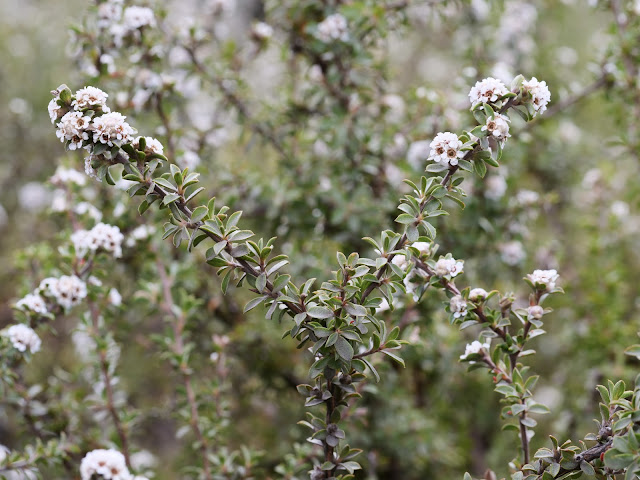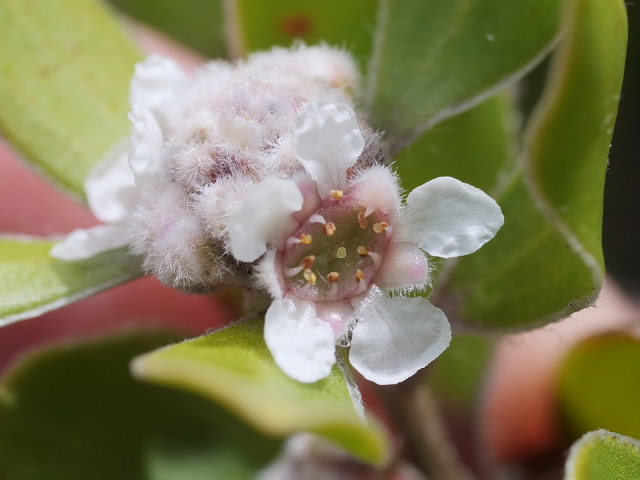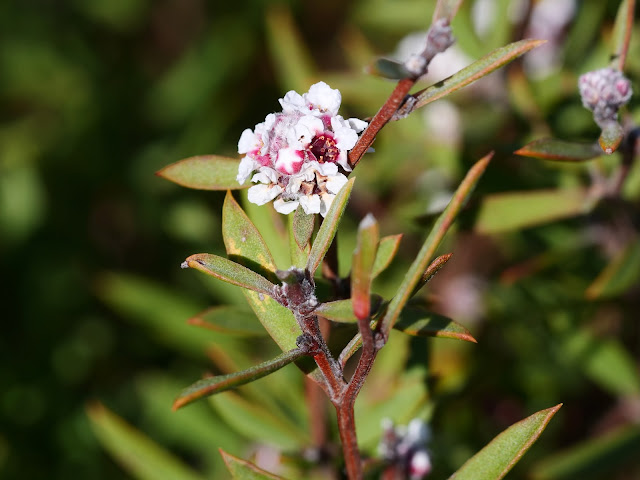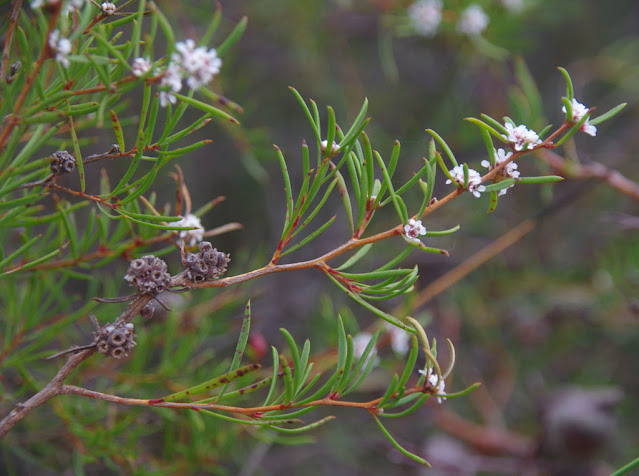Taxandria inundata
Inundata from the Latin, means flooded and refers to the swampy habitat this species prefers.
Occurs from Augusta eastwards to Boat Harbour, west of Denmark. Grows on lake margins or in seasonally to permanently waterlogged depressions in sedgeland or shrubland on sandy or clay soils.
A shrub to 2 m tall, often with rather blackish stems. Leaves usually in clusters, almost stemless, generally recurved but may be spreading with a recurved tip, blade usually quite broadly elliptic 6–14 mm long, 3–6 mm wide, sparsely to densely hairy, with 3–5 longitudinal veins, tip usually pointed with a tiny mucro (exposed tip of vein).
Flowers in clusters 8–15 mm across on short axillary shoots. Bracts and bracteoles densely silky hairy. Sepals densely hairy except in the membranous edge, tip rounded to somewhat pointed. Petals white. Stamens 10, one opposite each sepal and petal.
Fruits in roughly globular clusters, typically 7–12 mm across. Each capsule roughly cup-shaped 2.2–3 mm across, with short hairs.
Flowers mainly January to June, with petals persisting until November; fruits mainly October to December, but old fruits persisting until the following season or occasionally longer.
All photographs (c) Keith Morris, some rights reserved (CC BY-NC) unless otherwise indicated.











Comments
Post a Comment